-
Posts
6,424 -
Joined
-
Last visited
Content Type
Profiles
Forums
Store
Help Articles
Posts posted by Richard Kilgore
-
-
Here in the "Show us your tea things" topic is a Sadler version of the Brown Betty. About a two cupper.
-
This morning it's a Nilgiri - Glendale Estate, Handmade from TeaSource for me. Brewed Western style. I really, really like this Indian black tea.
What are you guys drinking today?
-
Black teas have about 50% the amount of caff that coffee does, so you could try any black tea you like and try it in the evening.
That isn't necessarily true.
From Silk Road Tea:
> drip coffee 60-90mg> black tea 25-110mg
> semi-green/oolong tea 12-55mg
> white tea 8-16mg
> green tea* 8-16mg
The range of caffeine in black tea is much greater than in coffee, so you could actually have more caffeine in a cup of tea than you would in coffee, but you could also have much less.
Either way, you'll never know how it affects you until you try. If experimenting with black teas in the evening, I'd start on weekends when it's not as important to get up early the next day.
Caffeine in tea is even more complicated than that. Caffeine level depends not only on characteristics of the leaf and how it is processed, but also on the leaf:water ratio and brew time. I understand that tea professionals are currently taught in certification classes not to make claims for different categories of tea due to this complexity and simply assume about 50% on average. Thus my short answer.
-
I can have a small amount and be OK, I think.
Thanks for the suggestions. As stated elsewhere, pretty much my only experience (and even this is very, very limited) with hot tea is black, save a very, very occasional cup of green tea that may be served to me in some Asian restaurant.
Black teas have about 50% the amount of caff that coffee does, so you could try any black tea you like and try it in the evening. If I were doing a black in the evening, it would probably be a quality Indian Darjeeling or Nilgiri, or a Chinese red tea - a Dian Hong. The Cultured Cup carries such, as do a number of web vendors such as Tea Source for the blacks and Norbu for the red. (There are more sources in the relevant topic here in the forum.)
-
Andie - Do you mean you don't vacuum seal very often, or that you don't vacuum seal using canning jars very often? Sounds like this would be helpful for green teas that one isn't going to drink within a month or so.
I don't vacuum seal using canning jars because they expose the tea to light, which is just as damaging as air, in my opinion.
I use the regular small vac. bags and put the bags in a crock - actually an old Bauer bean pot which maintains a cool temp and blocks the light.
I keep an opaque zip bag of a strong aromatic tea in a wide mouth quart canning jar. The bag keeps out the light and the jar keeps the aroma from filling every pore of the room.
-
It partly depends upon how much caffeine effects you. I often drink Chinese and Japanese green and white teas in the evening and an herbal in the hour or so before bed. The greens and whites are low caffeine and the herbals are non-caff unless you get one that is blended with tea.
A few more specific ideas:
Sencha
Silver Dragon
White Peony
Chamomille
-
What are you folks drinking today?
Looks like this is green tea day for me. Yesterday, too.
I tried gongfu brewing a new-to-me Chinese green from jingteashop.com -- a Pre-Ming Ding Huang Ya, but couldn't get it to work. I'll try a gongfu style brewing again, but decided to do it western style today and all went well. Yesterday vegetal in an unpleasant way; today vegetal in a pleasant way, with a slight buttery flavor and richer mouthfeel. This is my first exploration of Chinese green teas beyond the well-known ones.
This tea is no longer listed on their website and must be sold out, so I can't say much about it right now. I have emailed Sebastien at jing and asked if he could send me the text of the description. I'll post later if I receive anything.
-
Today I am drinking a Red Robe oolong. It is a lightly compressed tea, compressed into fingers or sticks that you break off. Apparently this is an inexpensive tea commonly sold in Taiwan. A friend of mine got it at a convenience store there. It is a heavy roasted and aged oolong. I brewed it at a full boil using a yixing pot dedicated to oolongs. About 7g in a 140ml pot. Timings were 30,30, 30, 60,120,120. I probably could have gone a little shorter on the first 2 steeps. The liquor was bright redish orange, there was mild and pleasant astringency, notes of cream and apricot, with a very nice sweet finish in the later steeps.
I like this tea, it ages well, comes in a convenient form, and is forgiving of my clumsy oolong technique.
This sounds different fom Big Red Robe - Da Hong Pao, Mike. Is it related?
-
I was hoping to avoid using two pots, so I wanted one that included a strainer. If I were to use two pots, I would still need a strainer of some sort. The basket that came with my pot is very fine mesh. But some stuff still gets through! If I were to use my small strainer I use for straining citrus juice and ohter small amounts of liquid, I think ALL of the tea I have would go through it.
A lot is getting through your strainer due to the quality of tea you are using at this point, Jeff. If you look at the dry tea spread out on a white plate or piece of paper you will see that it is chopped up and has a goodly amount of tea dust in it. This will be much less of a problem with whole leaf teas.
An alternative for now is to use two cups. Brew tea in one and then pour through the strainer that came with your pot into the second cup. Pre-warm the brewing cup with warm/hot water, then pour that into the second cup to pre-heat it while you are brewing in the first one. You can more effectively make a cup in this way than you can make one cup in your three cup ss pot.
-
So far today it's the Indian Nilgeri I have mentioned recently. The first Nilgeri I have tried and really like it. I can see why andienji is a fan.
What are you guys drinking today?
Add to that a couple of cups of PGTips (doing better with brewing it now, but only try to get one infusion out of it).
Followed by the Lapsong Souchong from TenRen that pinned my eyes open one day upthread. I brewed it with a weaker leaf to water ratio and for 3 minutes. Much easier going down. Actually very good. But I have more of this than I will drink anytime soon, so I'll send a sample to the first 3 members who PM me with an address to send it to and who will report on it here in the Coffee & Tea Forum. I have some small sample bags to order for sharing, so I'll mail these out in a few weeks.
Here in the light of day, the offer above for samples of this smoky Lapsong Souchong, a famous Chinese tea, is still good.
-
Here's a 2 cup English Sadler version of the Brown Betty that Kerry Beal sent me thinking I certainly did not have enough tea pots. Thanks Kerry.

-
Here are a variety of tea cannisters. I typically rinse out (no soap!) a new container to wash away any manufacturing residue or aroma, then fill it up with water to see if it leaks. Every metal one with a seam that I have tested leaks at a seam - usually the vertical seam at least, some more than others. Then wipe it out with an absolutely clean, aroma free dish towel or paper towel and let it air dry for a couple of days.
If I think one is more leaky than average, I use it for durable black teas or Pu-erh. If I need to put a more aromatic herbal tea in it, I make sure to keep it well away from other teas.
All of these tea cannisters are small with capacities ranging from about one ounce to six ounces of loose tea leaves.
First, the double lidded tin cannisters available from a wide variety of shops and web vendors. I especially like the tall one from TenRen with the mouth as wide as the widest part of the cannister. Great for putting opaque zip bags for extra protection for hard to source teas or more perishable ones.

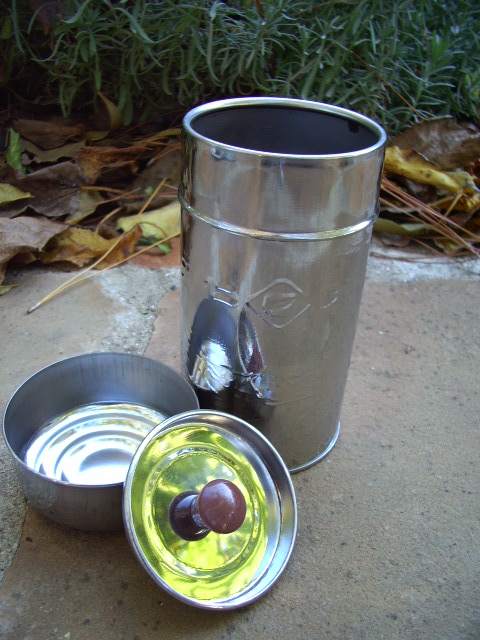
Next are two single lidded cannisters with a synthetic seal between the rim of the lid and the mouth of the cannister. On both of these the synthetic material is so stiff that there is not a consistently effective air seal.
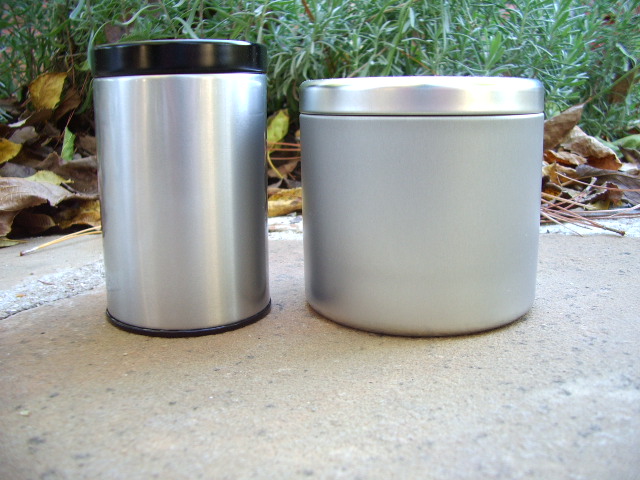
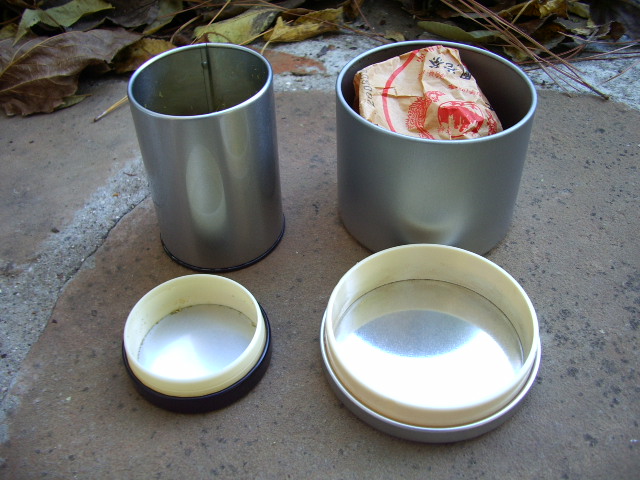
Here is a Chinese porcelain tea cannister with a flexible synthetic seal that slips on the lid. Seals well, but being porcelain some light shines through, if dimly. I don't put it in a brightly lit spot, but don't worry about the light with most teas.
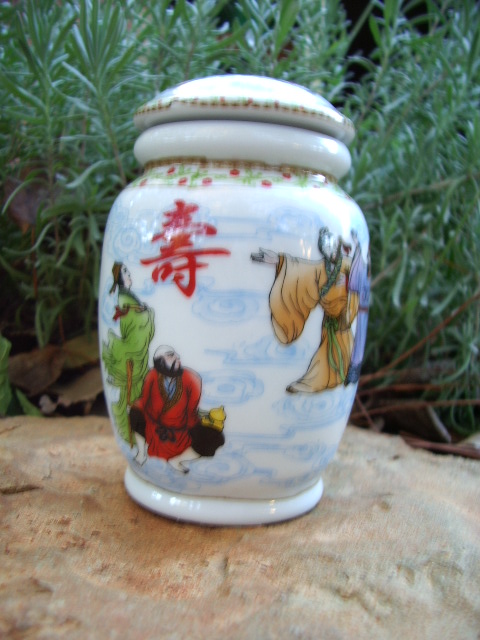
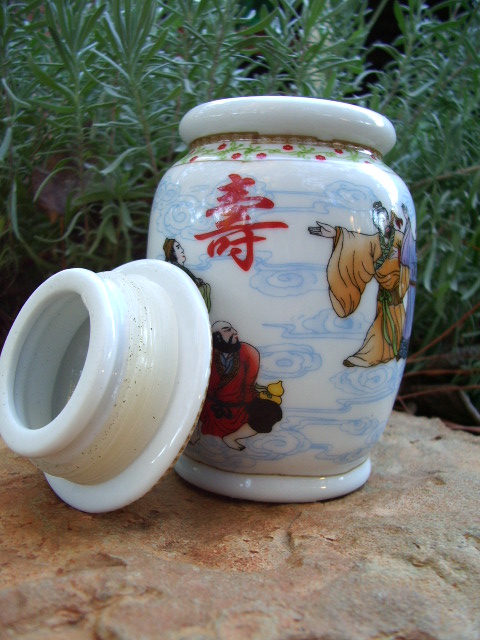
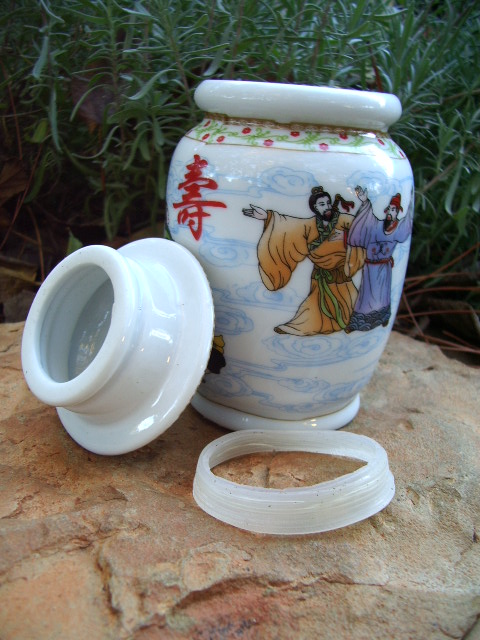
And here is a Chinese porcelain tea cannister with a poorly made lid-body fit (it was cheap, cheap), but thicker porcelain. Less light gets through. I keep small sample bags of Puerh in it.
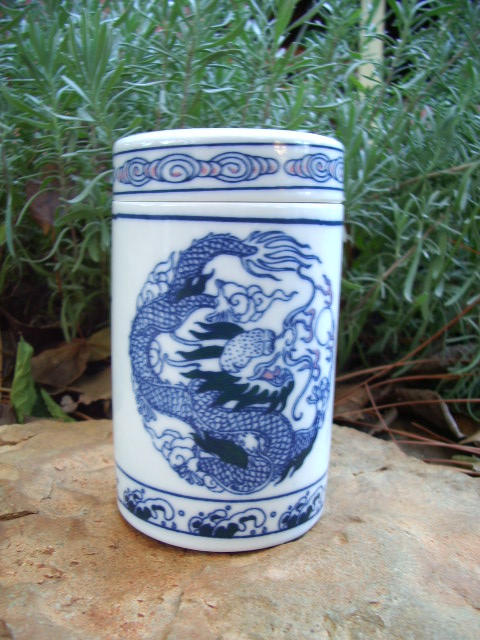
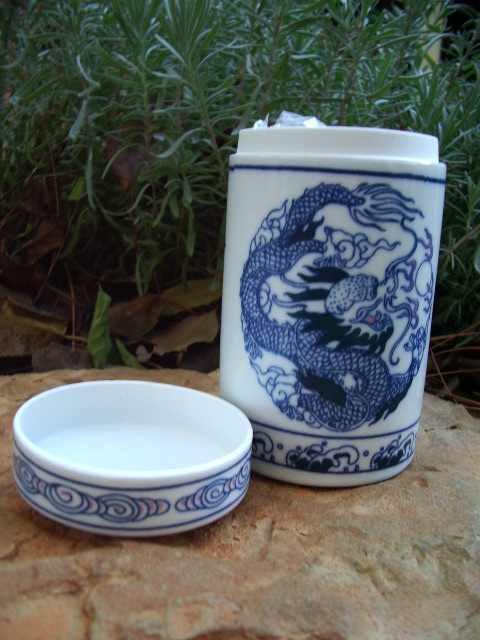
-
Silvia fan and owner here - along with Rocky grinder. As said above, this is not a "set it, and forget it" type of unit. Freshness of coffee, proper grind, proper tamping, good water, etc. are all very important. Silvia is finicky; however, the newer units are pod adaptable and right in that price range.
And remember, coffee making in general, and espresso making in particular, make a big mess.
Yes, do allow for the cost of a really good grinder if you do not get an automatic that will do the grinding too. The Rocky is great, though not inexpensive. It's what I use for my French Press coffee daily.
-
So far today it's the Indian Nilgeri I have mentioned recently. The first Nilgeri I have tried and really like it. I can see why andienji is a fan.
What are you guys drinking today?
Add to that a couple of cups of PGTips (doing better with brewing it now, but only try to get one infusion out of it).
Followed by the Lapsong Souchong from TenRen that pinned my eyes open one day upthread. I brewed it with a weaker leaf to water ratio and for 3 minutes. Much easier going down. Actually very good. But I have more of this than I will drink anytime soon, so I'll send a sample to the first 3 members who PM me with an address to send it to and who will report on it here in the Coffee & Tea Forum. I have some small sample bags to order for sharing, so I'll mail these out in a few weeks.
-
I look at the shelf life of teas much like andieseji, with a few exceptions. Oolongs on the darker end tend to stay drinkable longer, and some are actually aged. In fact I had an aged one (90s) from Hou De recently. On the other hand I try to drink green teas within a month after putting them in as secure storage as I can.
It is possible to put "leftover" tea in a small airtight glass jar and stick it in the fridge overnight, but some teas will reward this act of tea desperation more than others. I have used the smallest size canning jars.
And triple emphasis to what andiesenji said about experimenting. Think about it as if you were playing with making cocktails, or knocking out a soup, adjusting here and tweaking there. I did this at first with less expensive, but good, teas so that I would not worry about it and inhibit myself from trying different teas and brewing techniques. As you can see in the What Tea Are You Drinking Today topic, I still completely blow a brew from time to time.
Jeff, you also may want to check out the topic in this Coffee & Tea forum on Tea Storage.
-
I have an abundance of celery in the fridge and would like to do something new and different with it. I am open to any and all suggestions, so what do you do with celery in your part of the world?
-
Love grits but hate standing in front of the stove for 45 minutes to get great grits early in the morning (Don't like the instant kind as much).
Is there a way to cook grits over night may be using a slow cooker. I'm not looking for a cakey polenta as the end result but creamy grits.
Soup
I have not done this in a while, but when I do the slow cooker does fine. I'll try it again soon. But let us know if you discover any tricks to making this work well.
-
So far today it's the Indian Nilgeri I have mentioned recently. The first Nilgeri I have tried and really like it. I can see why andienji is a fan.
What are you guys drinking today?
-
-
Baguette, buttered and topped with sliced radish.
-
Difficult to just let a new pot sit there, isn't it, Jeff?
Twinnings is a good grocery store brand and you can experiemnt with it until you have something better. Leaf:water ratios are just something to play with until you get it the way you like it best. A good starting point is 2.5 g (about one teaspoon) per 6 - 8 ounces, so you're on the right track. You can now try it a little stronger, say 1 1/4 or 1 1/2 teaspoon per 8 ounces. Try 4 minutes instead of 5. Just experiment with ratios and time and see what happens.
Also, pics are helpful if you can post a pic of the dry tea leaves and the wet leaves and the color of the tea liquor in the cup.
When you get to The Cultured Cup again, here are a few suggestions, but tell them you're a tea newbie and let the staff guide you -- take the opportunity to smell a lot of teas.
Just get one ounce of each tea you want to try. An ounce goes a long way (about 12 cups of first infusion - but you'll probably get an average of 3 infusions, so that's really 36 cups per ounce of tea leaves). This allows you to explore and try more teas compared to buying 3 to 4 ounces and being stuck with it for a long time. Even when I am 99% sure I am going to love a tea from the dry aroma alone, I seldom get more than an ounce the first time.
For a black tea: Ceylon Pettiagala Estate, which is good for iced tea, as well as drinking it hot. Or ask if they have a whole leaf version of an English Breakfast Blend - that would make an interesting comparison for you.
For an Oolong tea: Angel Tears (Shui Xian Cha)
For a green tea: ask if a new shipment (the past couple of weeks) of the Japanese Sencha has come in. If not, ask about the Silver Dragon or Lung Ching, two Chinese green teas.
Check out the cup size infuser baskets for making just one cup of tea at a time in a cup you already have.
You also may enjoy sitting at the tea bar at the back of the shop and having them make a cup or pot of tea for you and seeing how they do it. If you do, you can have them make it from any tea in the shop, so try one different from whatever you are taking home.
-
Today I started with a 2008 Darjeeling Castleton 2nd Flush Wiry. Great! Followed just now by my second taste of a Mai Jian green tea from China. Very smooth, buttery and no astringency on the first infusion gongfu style.
-
Andie - Do you mean you don't vacuum seal very often, or that you don't vacuum seal using canning jars very often? Sounds like this would be helpful for green teas that one isn't going to drink within a month or so.
I don't vacuum seal using canning jars because they expose the tea to light, which is just as damaging as air, in my opinion.
I use the regular small vac. bags and put the bags in a crock - actually an old Bauer bean pot which maintains a cool temp and blocks the light.
Thanks. I think if one vac sealed in the canning jars and kept them in a dark box or closet it would work out okay. Aesthetically, I like the idea of your bean pot.
-
Andie - Do you mean you don't vacuum seal very often, or that you don't vacuum seal using canning jars very often? Sounds like this would be helpful for green teas that one isn't going to drink within a month or so.



What Tea Are You Drinking Today? (Part 1)
in Coffee & Tea
Posted
This afternoon it's a fresh Chinese Tie Guan Yin Oolong - Fall Harvest 2008, from Anxi County, Fujian - a free sample that Greg Glancy sent me to try. I am brewing it gongfu style in a gaiwan and am on the second of two 30 second infusions. It clearly has several more to go. Very clear yellow-green liquor. The first had a slight, very pleasant vegetal taste and aroma with a hint of sweetness. The second is less vegetal, thicker mouthfeel, buttery, lingering aftertaste. Wonderful!